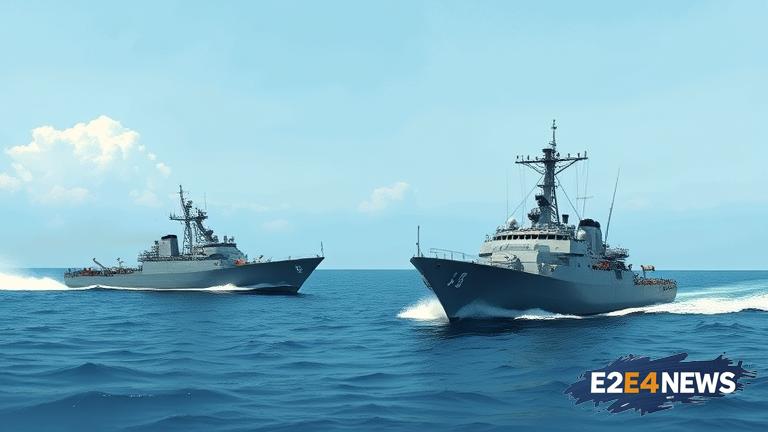In a move aimed at strengthening their strategic partnership and promoting regional stability, India and the Philippines have conducted their first joint naval patrol in the South China Sea. The historic exercise, which took place in the disputed waters, demonstrates the growing cooperation between the two nations in the field of defense and security. The joint patrol is seen as a significant milestone in the bilateral relationship between India and the Philippines, and is expected to further enhance their collaboration in the areas of maritime security, counter-terrorism, and disaster response. The South China Sea, a critical trade route, has been at the center of a longstanding territorial dispute involving several countries, including China, the Philippines, Vietnam, and Malaysia. India, which has been increasing its engagement with Southeast Asian nations, has been vocal about its support for freedom of navigation and overflight in the region. The joint naval patrol, which was conducted by the Indian Navy and the Philippine Navy, involved a series of exercises and drills aimed at enhancing interoperability and cooperation between the two forces. The patrol also included a visit to the Philippine-occupied island of Pag-asa, which is claimed by China. The exercise was seen as a demonstration of the commitment of both countries to promoting peace and stability in the region, and to upholding the principles of international law. The joint patrol was also significant in the context of India’s Act East policy, which aims to strengthen its economic and strategic ties with Southeast Asian nations. The policy, which was launched in 2014, has been a key driver of India’s engagement with the region, and has led to increased cooperation in areas such as trade, investment, and defense. The Philippines, which has been a key partner for India in the region, has been seeking to strengthen its ties with India in recent years, particularly in the areas of defense and security. The joint naval patrol is expected to further enhance the bilateral relationship between the two countries, and to contribute to the promotion of regional stability and security. The exercise was also seen as a message to China, which has been increasing its military presence in the South China Sea, and has been accused of violating international law. India and the Philippines have both been critical of China’s actions in the region, and have called for the respect of international law and the freedom of navigation. The joint patrol was conducted in a professional and safe manner, and was seen as a success by both countries. The exercise demonstrated the ability of the Indian and Philippine navies to work together seamlessly, and to conduct complex operations in a challenging environment. The joint patrol also highlighted the importance of cooperation and collaboration in promoting regional stability and security. The exercise was seen as a significant milestone in the bilateral relationship between India and the Philippines, and is expected to further enhance their cooperation in the areas of defense and security. The joint patrol was also significant in the context of the regional security landscape, and demonstrated the commitment of both countries to promoting peace and stability in the region. The exercise was conducted in accordance with international law, and was seen as a demonstration of the respect of both countries for the principles of freedom of navigation and overflight. The joint patrol was also seen as a message to other countries in the region, and demonstrated the ability of India and the Philippines to work together to promote regional stability and security. The exercise was a significant success, and demonstrated the growing cooperation between India and the Philippines in the field of defense and security. The joint patrol is expected to further enhance the bilateral relationship between the two countries, and to contribute to the promotion of regional stability and security. The exercise was also significant in the context of India’s growing engagement with Southeast Asian nations, and demonstrated the commitment of India to promoting peace and stability in the region. The joint patrol was seen as a demonstration of the ability of India and the Philippines to work together to promote regional stability and security, and to uphold the principles of international law.
